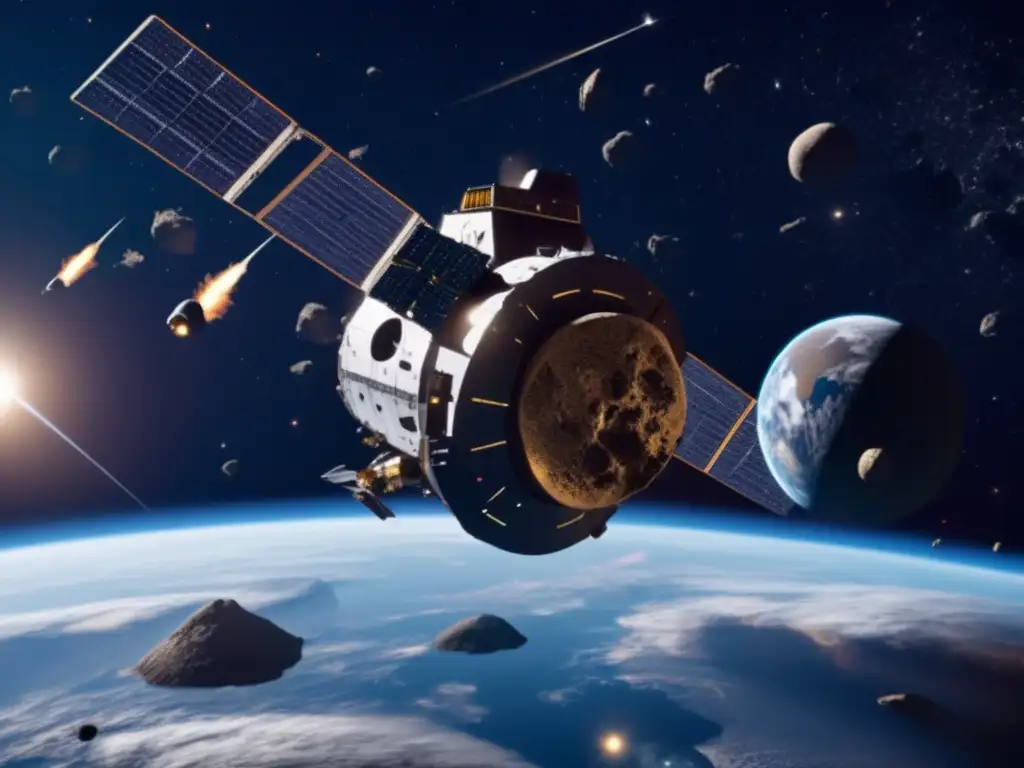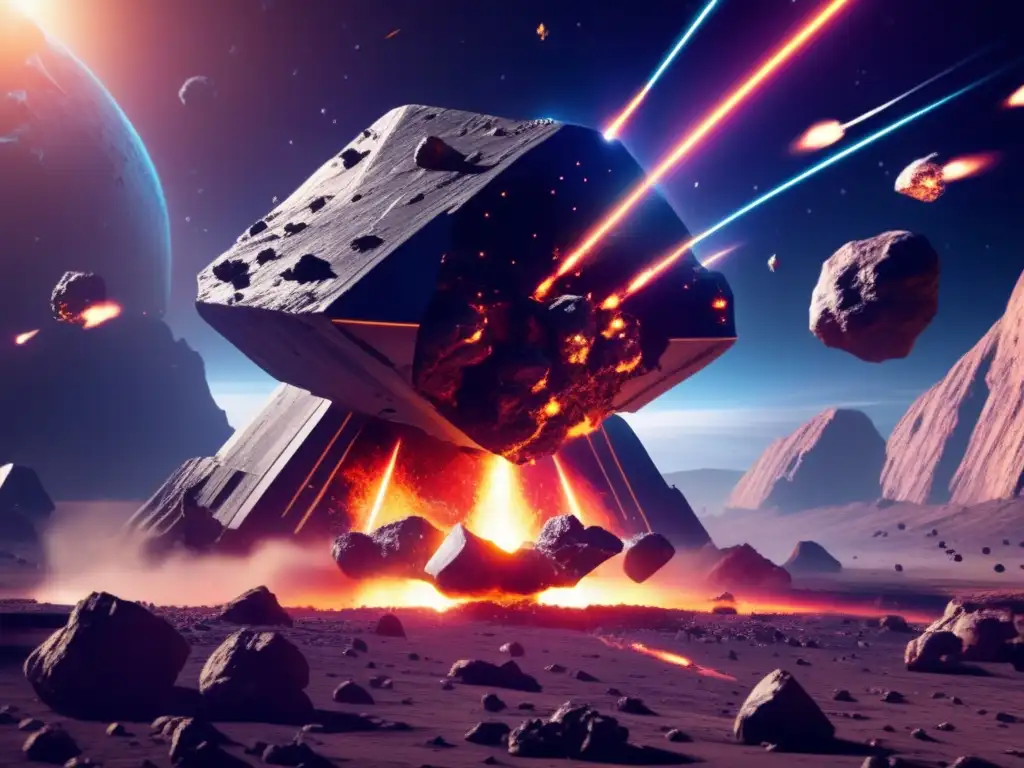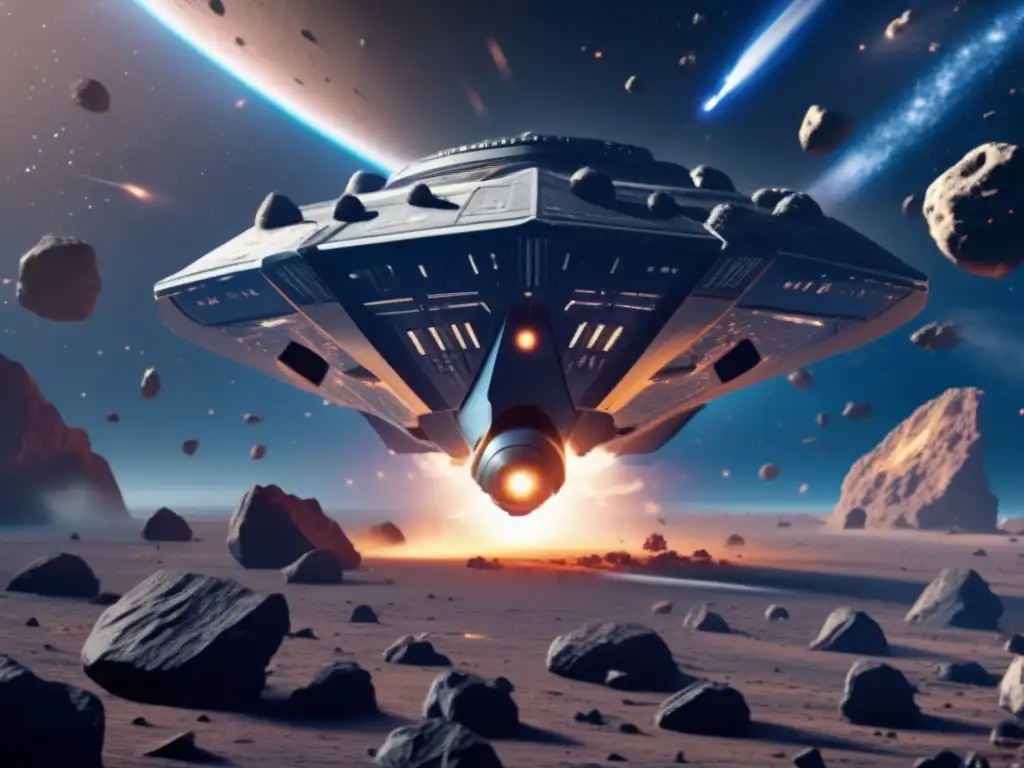Guarding Against Galactic Threats: Strategies For Asteroid Defense

Introduction
Asteroids are one of the biggest threats to our planet, with the potential to cause catastrophic damages on a global scale. As we continue to explore space, it becomes increasingly important to develop more effective planetary defense strategies to protect ourselves from these galactic threats. In this article, we will dive deep into the world of asteroid defense, exploring the latest techniques and technologies that are being used to guard against these spaceborne dangers.
The Importance of Planetary Defense

Asteroid Detection
The first step in defending against asteroids is detecting them. Scientists use a range of tools to detect asteroids, including telescopes, radar, and infrared imaging. NASA's Near Earth Object (NEO) program tracks thousands of asteroids, using ground-based observatories, to determine their orbits and predict any potential impact hazards. Additionally, NASA's OSIRIS-REx mission is collecting samples from the asteroid Bennu, furthering our understanding of the compositions and structures of these galactic bodies.
Asteroid Diversion
Once an asteroid has been detected, the next step is to divert it before it can collide with Earth. One approach being explored is the use of kinetic impactors, unmanned spacecraft designed to collide with incoming asteroids, altering their course and avoiding impact. Another method that has gained attention is gravitational tractor technology, where a spacecraft would use its gravitational pull to gradually alter the course of the asteroid over a long period of time, steering it clear of Earth.
Asteroid Deflection
If an asteroid is too large or moving too quickly to be diverted, deflection becomes the only option. Deflection involves changing the speed and direction of the asteroid to avoid an impact with Earth. Nuclear explosives have been proposed for this purpose, although the potential risks and dangers of using nuclear weapons in space make this a controversial method.
The Latest Technologies in Asteroid Defense

Laser Bees
A new proposal for asteroid defense is the so-called "Laser Bees" system, where a swarm of small spacecraft equipped with lasers would be sent to a threatening asteroid. The lasers would vaporize parts of the asteroid's surface, creating a plume of gas that would act as a thruster, gradually diverting the asteroid from its course. This approach has the advantage of being able to target smaller asteroids that traditional methods may not be able to deflect effectively.
DART Mission
The Double Asteroid Redirection Test (DART) mission is another example of new technologies being developed for asteroid defense. The DART spacecraft, set to launch in 2021, will travel to the asteroid Didymos and collide with one of its moons, altering its orbit and demonstrating the effectiveness of kinetic impactors to deflect asteroids.
HERA Mission
The Hera mission, set to launch in 2024, is also aimed at studying asteroid deflection techniques. It will observe the impact created by the DART spacecraft on the Didymos moon and provide valuable data on how asteroids can be redirected.
Challenges and Limitations

Time Constraints
One of the biggest challenges in developing effective asteroid defense strategies is time. Detecting an asteroid far enough in advance to develop and implement a successful deflection strategy can be difficult, as many asteroids are only detected when they are already very close to Earth.
Technological Hurdles
Developing technologies that are reliable, effective, and safe for use in space is a significant hurdle. Many proposed asteroid defense techniques remain theoretical or have not yet been fully tested or proven to work reliably in practice.
Funding
The development of new asteroid defense technologies requires significant funding, which can be a challenge to secure given competing priorities and limited budgets.
Frequently Asked Questions

-
Can we detect all asteroids?
No, it is estimated that we have only detected a small percentage of the asteroids that could potentially pose a threat to Earth.
-
How much warning time do we typically have before an asteroid impact?
It can vary greatly depending on the size and speed of the asteroid, but in some cases, impacts could occur with only a few days' notice.
-
Is nuclear deflection the best option?
Nuclear deflection is a controversial method with potential risks and dangers, so it is not necessarily the best option. Many other methods, such as kinetic impactors, are being explored as well.
-
What happens if we can't deflect an asteroid?
If an asteroid cannot be deflected, evacuation or sheltering in place may be the only options.
-
Who is responsible for asteroid defense?
There is currently no centralized body responsible for asteroid defense, although NASA and other space agencies are taking a leading role in developing new strategies and technologies.
Conclusion
In conclusion, asteroid defense is a complex and challenging field, and much work remains to be done to develop effective strategies and technologies to protect our planet from these galactic threats. However, with continued investment in research and development, we can make significant progress toward safeguarding our world against the dangers of asteroids.
We encourage readers to share their thoughts and ideas on asteroid defense in the comments section below and to engage with www.asteroidrealm.com by subscribing, sharing the article on social networks, or other forms of participation. Thank you for your attention and interest in this important topic.
Additional Resources

For those interested in learning more about asteroid defense, here are some additional resources:
 Planetary Protectors: The Science Of Asteroid Defense
Planetary Protectors: The Science Of Asteroid Defense Deflecting The Space Threat: Techniques For Asteroid Defense
Deflecting The Space Threat: Techniques For Asteroid Defense Our Planetary Bodyguards: Strategies For Asteroid Defense
Our Planetary Bodyguards: Strategies For Asteroid DefenseIf you want to discover more articles similar to Guarding Against Galactic Threats: Strategies For Asteroid Defense, you can visit the Planetary Defense category.
Leave a Reply

Articulos relacionados: